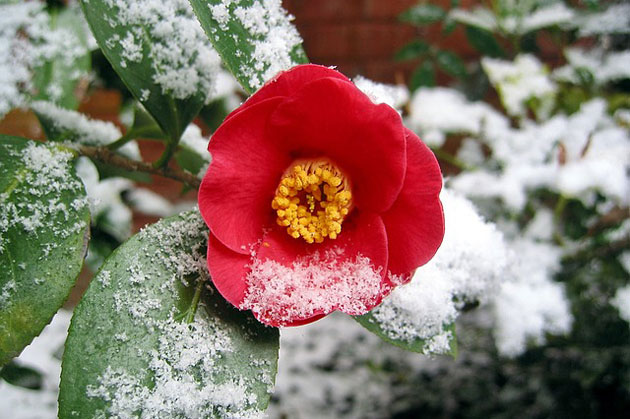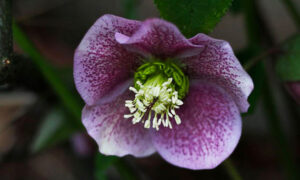Winter flowers, especially those in more vibrant tones, enhance the decor and can be used in different environments, no matter the style. You can plant them directly in gardens or pots, boxes, along fences, and flowerbeds.
Although most species bloom in the spring, some species are especially fond of the cold days of winter. Believe me, low temperature plants will leave your garden home with a cozy ambiance, and surprise you with the beautiful visual effect. If you have the right gardening tools, you ensure having beautiful winter flowers. And for you to be delighted with the winter flowers, we have selected a list of flowers and plants that like low temperatures. Check them out!
What plants do best in cold weather?
Some species, including those known as winter flowers, are the most resistant. They are beautiful and usually need to spend many hours under the sun. As much as these plants prefer cold weather, this does not mean that you can leave these winter flowers in contact with frost, this can destroy the petals.
For you to know a little more about the flowers that bloom in winter and how to take care of each one, we have selected a list of the 12 most beautiful winter flowers.
Primrose (Primula sp.)
Primrose is a plant native to North America and is often used in indigenous medicine. Its name comes from the Latin primus, which means “First.” The reference is due to the plant’s flower, which occurs at the end of winter.

An interesting fact: Primrose winter flowers were used a lot in the period of Queen Victoria, who related the flower to beauty, delicacy, purity, and goodness. The colors of these winter flowers are vibrant and range from yellow, orange, red, purple, and violet.
Snapdragon (Antirrhinum majus)
Snapdragon is a herbaceous plant that has five subspecies and a large number of cultivars. It originates from the Mediterranean region of Africa and also from Europe. The popular name is because when one of its flowers is properly squeezed, it opens as if it were a mouth, closing again when it is released.

The flowers of the species can reach up to 40 cm and more than 1 m in height. Colors range from red, pink, purple, and yellow. To grow this cool-weather plant, place it in direct sunlight, keeping the soil moist. It will grow beautiful and when the time comes, it will be one of the most distinctive winter flowers in your garden.
Icelandic Poppy (Papaver nudicaule)
This beautiful species of poppy is native to North America and produces flowers in white, pink, salmon, and orange colors. The species also needs a lot of sunlight and must be watered regularly to grow correctly and reach its beautiful size, which varies between 30 to 60cm.
Although it exhibits a unique beauty, poppy flowers have toxic components, so be aware of children and pets near this flower.
Calendula Flower (Calendula officinalis)
Calendula is a plant in the daisy family. Originally from the Mediterranean region, the species is known for opening its petals at sunrise and closing them at nightfall. It is also a short-cycle edible flower, recognized for its phytotherapeutic properties and healing capacity.
Gardenia (Gardenia jasminoides)
If you love white flowers, then you will fall in love with gardenia winter flowers. It is a perfect plant for outdoor gardens, where it exudes a delicious aroma when its flowers are open.
Gardenia is a very beautiful flower originating in China and belonging to the Rubiaceae family. Generally, it presents white flowers that with time can acquire a creamier tone. Its leaves have a somewhat dark green tone, being shiny, which makes them even more beautiful.

Interestingly, their leaves do not fall during the winter and, precisely for this reason, they are plants that are often used in garden decorations.
Camellia (Camellia sp.)
The camellia, scientifically called Camellia, is a genus of shrub originating in Japan, Korea, and China. It is one of the most popular shrubs throughout the year, mainly due to its striking flowers and bright green foliage.
With more than two hundred species in its collection, the camellia is a slow-growing plant that, depending on the variety, can reach several meters in height. If there is anything, apart from the two spectacular flowers, that is characteristic of this shrub, it is its foliage.

Camellias are perennial; their leaves remain throughout the year, even in the dry season. These leaves are oval in shape, firm, and have a very striking dark green hue. Another of the most outstanding aspects of this type of plant and the main reason for its popularity is its winter flowering (a process that lasts until the spring months).
The camellia develops large flowers in different shades, from classic white or pink to red or yellow. In addition to the wide chromatic variety, the flowering can also be of different sizes and shapes, compound or simple, depending on the species.
Cherry Blossom (Prunus serrulata)

Coming from Japan, the cherry trees put on a show of their own in June and July. Because they are resistant to extreme cold, cherry trees are ideal for outdoor environments, but they should be planted away from walls. Bet on it as your flowers for colder winter climates.
Cyclamen (Cyclamen sp.)
Cyclamen is one of the most used winter flowers for ornamentation. Its foliage is beautiful, it has a dark green hue with some lighter spots and the flowers have distinct colors, which are impressive.

These winter flowers are considered the “queens” of the season, as they survive even the lowest temperatures. To care for the cyclamen winter flower, prune the yellowed leaves and keep the soil moist, avoiding watering the winter flowers.
Wild Pansy (Viola Tricolor)
Wild pansy blooms in winter and stays that way until spring. It is also a semi-shade plant, in addition to being edible. It appears in different colors like pink, purple, blue, yellow, and even black. If you choose to plant the seed, the flower begins to appear in around 90 days.

High temperatures inhibit the germination and growth of these plants. Therefore, this is one of the most beautiful options to plant in the coldest temperatures and has impressive and colorful arrangements.
Growing and caring for winter flowers
The plants mentioned here can be grown indoors and outdoors. But for them to bloom in the cold period, you must observe some aspects. The most important thing is to use the ideal substrate with the necessary drainage. Fertilization is essential for all plants and must be carried out periodically, depending on the species.
Sow these plants early in the cooler months to ensure the plants are ready for winter blooms.
Most plants are sensitive to extreme temperatures. However, some of the plants mentioned here withstand long periods of cold weather, and others even withstand frost and snowfall (like the cherry blossom).





